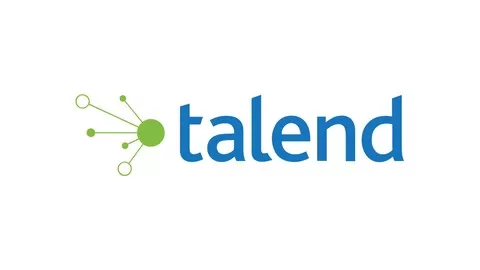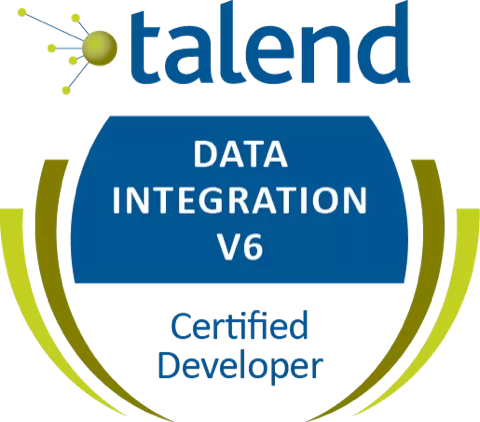Exporting Metadata as context
•Chapter 1• Data integration and Talend Studio • Data analytics • Operational integration • Execution monitoring 2 Chapter 2
• Getting started with Talend Studio • Important concepts in Talend Open Studio for Data Integration • Launching Talend Open Studio for Data Integration • How to launch the Studio for the first time • How to set up a project • Working with different workspace directories • How to create a new workspace directory • Working with projects • How to create a project • How to import the demo project • How to import projects • How to open a project • How to delete a project • How to export a project • Migration tasks • Setting Talend Open Studio for Data Integration preferences • Java Interpreter path• External or User components • Exchange preferences • Language preferences • Debug and Job execution preferences • Designer preferences• Adding code by default • Performance preferences • Documentation preferences • Displaying special characters for schema columns • SQL Builder preferences • Schema preferences• Libraries preferences • Type conversion • Usage Data Collector preferences • Customizing project settings • Palette Settings • Version management• Status management• Job Settings • Stats & Logs • Context settings • Project Settings use • Status settings • Security settings Chapter 3
• Designing a data integration Job • What is a Job design• Getting started with a basic Job design • How to create a Job• How to drop components to the workspace • How to search components in the Palette • How to connect components together • How to drop components in the middle of a Row link • How to define component properties • How to run a Job • How to customize your workspace • Using connections • Connection types • How to define connection settings • Using the Metadata Manager • How to centralize the Metadata items • How to centralize contexts and variables • How to use the SQL Templates • Handling Jobs: advanced subjects • How to map data flows • How to create queries using the SQLBuilder • How to download/ upload Talend Community components • How to install external modules • How to launch a Job periodically • How to use the tPrejob and tPostjob components • How to use the Use Output Stream feature • Handling Jobs: miscellaneous subjects • How to share a database connection • How to define the Start component • How to handle error icons on components or Jobs • How to add notes to a Job design • How to display the code or the outline of your Job • How to manage the subjob display • How to define options on the Job view • How to find components in Jobs • How to set default values in the schema of an component Chapter 4
• Managing data integration Jobs • Activating/Deactivating a Job or a sub-job • How to disable a Start component • How to disable a nonStart component • Importing/exporting items or Jobs • How to import items• How to export Jobs to an archive • How to export items• How to change context parameters in Jobs • Managing repository items• How to handle updates in repository items • Searching a Job in the repository • Managing Job versions • Documenting a Job • How to generate HTML documentation • How to update the documentation on the spot• Handling Job execution Chapter 5
• Mapping data flows • tMap operation • Setting the input flow in the Map Editor • Mapping variables • Using the expression editor • Mapping the Output setting Talend Open Studio• Setting schemas in the Map Editor • Solving memory limitation issues in tMap use • Handling Lookups • tXMLMap operation • Using the document type to create the XML tree• Defining the output mode • Editing the XML tree schema
Chapter 6
• Managing Metadata • Objectives • Setting up a DB connection• Step 1: General properties • Step 2: Connection • Step 3: Table upload• Step 4: Schema definition •Setting up a JDBC schema• Step 1: Generalproperties • Step 2: Connection • Step 3: Table upload• Step 4: Schema definition • Setting up a File Delimited schema • Step 1: General properties • Step 2: File upload • Step 3: Schema definition • Step 4: Final schema• Setting up a File Positional schema • Step 1: General properties • Step 2: Connection and file upload • Step 3: Schema refining • Step 4: Finalizing the end schema • Setting up a File Regex schema • Step 1: General properties • Step 2: File upload • Step 3: Schema definition • Step 4: Finalizing the end schema • Setting up an XML file schema • Setting up an XML schema for an input file • Setting up an XML schema for an output file • Setting up a File Excel schema • Step 1: General properties • Step 2: File upload • Step 3: Schema refining • Step 4: Finalizing the end schema Chapter 7
•Datawarehousing Concepts•ETL Concepts•tsortrow•tunite•tuniqerow•tbufferinput•tbuffer output•thashinput•thashoutput•tfilelist•tsleep•tloop•file input output components•database input output components•tsendmail•treplicate•tfiltercolumns•tfilterrows•treplace•tconverttype•tdie•tcontextload•tmemorizerow•trowgenerator•trunjob•prejob•postjob•tsamplerows•tnormalize•tdenormalize•tmap•taggrigator•tjoin•tsystem•Dynamic•tjava•tjavarow•tjavaflex•tschemacompliancecheck•tlogrow•tlogcatcher•t ststcatcher•tparallelize•tsendmail•tfilecopy•tfilearchive•tfileProperties•tfileunarchive•tfiletouch•tfiledelete•tfileexist•tfiletouch•tfilecopy•tftpfilelist•tftpput•tftpget•tftpdelete•tftpfileexist•tftpConnection•tftpRename•tftpfileproperties•toracleInput•toraclerow•toracleoutpt•toracleconnection•toracleBulk•toracleBulkexec•toracleClose•toracleRollback•toraclecommit•tmssqlInput•tmssqlrow•tmssqloutpt•tmssqlconnection•tmssqlBulk•tmssqlBulkexec•tmssqlClose•tmssqlRollback•tmssqlcommit•tDb2Input•tDb2row•tDb2outpt•tDb2connection•tDb2Bulk•tDb2Bulkexec•tDb2Close•tDb2Rollback•tDb2commit•OnsubJobOK•OnSubjobError•OnComponentOk•OnComponentError•runif•tExcelInput•tExceloutput•tfileInputdelimited•tfileoutputDelimited•tfileInputXml•tfileoutputXml•tfileinputPositional•tfileOutputPositional•SCD1•SCD2•SCD3• stage loading•Dimension Loading •fact Loading •project Explanation




